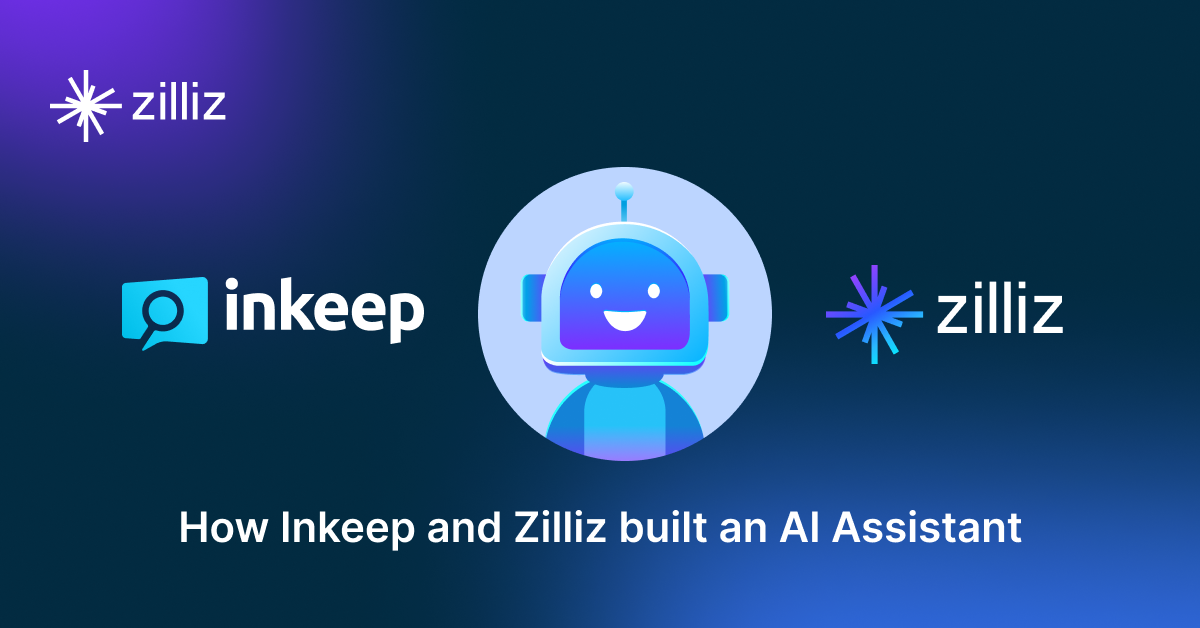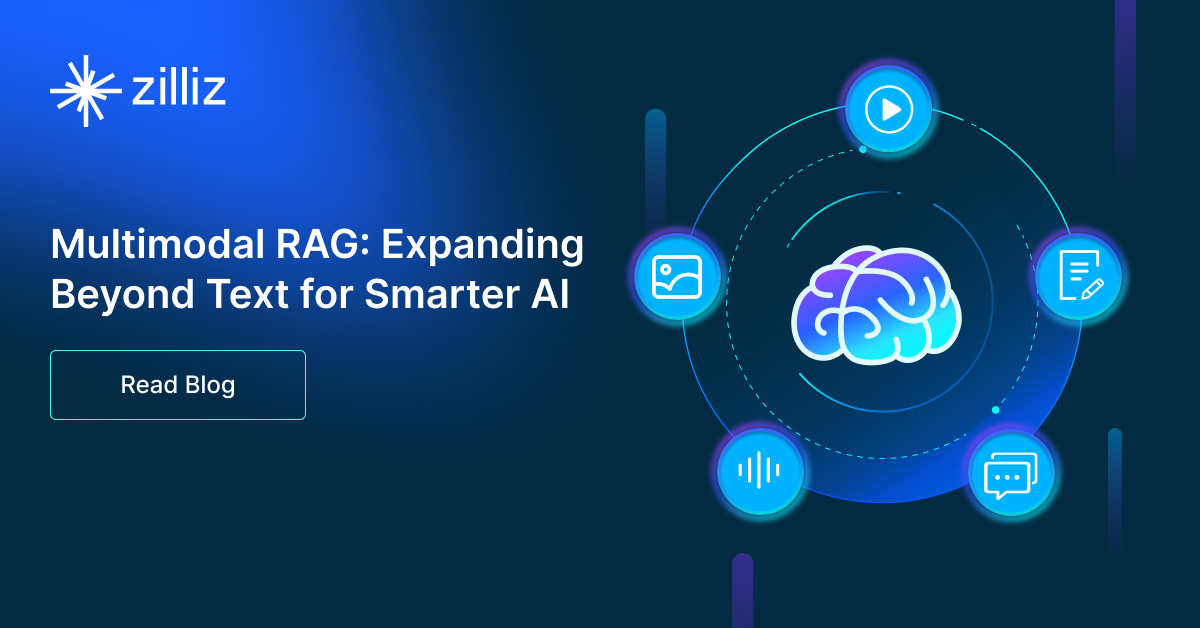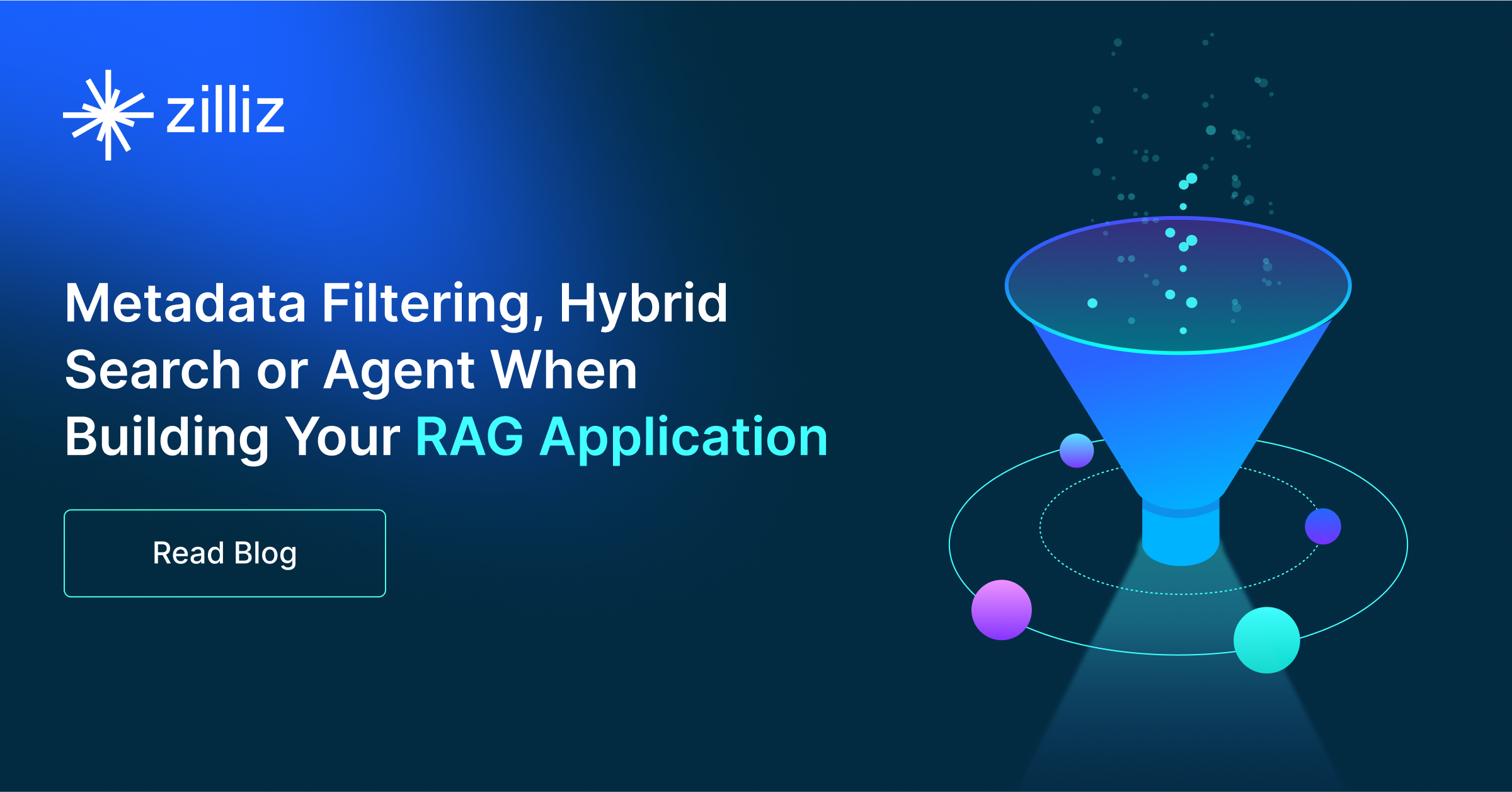Build RAG Chatbot with LangChain, OpenSearch, Groq Qwen2.5 32B Instruct, and OpenAI text-embedding-3-small
Introduction to RAG
Retrieval-Augmented Generation (RAG) is a game-changer for GenAI applications, especially in conversational AI. It combines the power of pre-trained large language models (LLMs) like OpenAI’s GPT with external knowledge sources stored in vector databases such as Milvus and Zilliz Cloud, allowing for more accurate, contextually relevant, and up-to-date response generation. A RAG pipeline usually consists of four basic components: a vector database, an embedding model, an LLM, and a framework.
Key Components We'll Use for This RAG Chatbot
This tutorial shows you how to build a simple RAG chatbot in Python using the following components:
- LangChain: An open-source framework that helps you orchestrate the interaction between LLMs, vector stores, embedding models, etc, making it easier to integrate a RAG pipeline.
- OpenSearch: An open-source search and analytics suite derived from Elasticsearch. It offers robust full-text search and real-time analytics, with vector search available as an add-on for similarity-based queries, extending its capabilities to handle high-dimensional data. Since it is just a vector search add-on rather than a purpose-built vector database, it lacks scalability and availability and many other advanced features required by enterprise-level applications. Therefore, if you prefer a much more scalable solution or hate to manage your own infrastructure, we recommend using Zilliz Cloud, which is a fully managed vector database service built on the open-source Milvus and offers a free tier supporting up to 1 million vectors.)
- Groq Qwen2.5 32B Instruct: Groq Qwen2.5 is a large-scale AI language model designed for instruction-following tasks. With 32 billion parameters, it excels in generating coherent, contextually relevant responses and understanding complex queries. Ideal for applications in customer service, content creation, and educational tools, it enhances user interactions through its robust and adaptable capabilities.
- OpenAI text-embedding-3-small: This model specializes in generating high-quality text embeddings for various NLP tasks, offering a balance between performance and computational efficiency. Its strengths lie in semantic understanding and similarity comparisons, making it ideal for applications in search, recommendation systems, and clustering tasks where quick processing is essential.
By the end of this tutorial, you’ll have a functional chatbot capable of answering questions based on a custom knowledge base.
Note: Since we may use proprietary models in our tutorials, make sure you have the required API key beforehand.
Step 1: Install and Set Up LangChain
%pip install --quiet --upgrade langchain-text-splitters langchain-community langgraph
Step 2: Install and Set Up Groq Qwen2.5 32B Instruct
pip install -qU "langchain[groq]"
import getpass
import os
if not os.environ.get("GROQ_API_KEY"):
os.environ["GROQ_API_KEY"] = getpass.getpass("Enter API key for Groq: ")
from langchain.chat_models import init_chat_model
llm = init_chat_model("qwen-2.5-32b", model_provider="groq")
Step 3: Install and Set Up OpenAI text-embedding-3-small
pip install -qU langchain-openai
import getpass
import os
if not os.environ.get("OPENAI_API_KEY"):
os.environ["OPENAI_API_KEY"] = getpass.getpass("Enter API key for OpenAI: ")
from langchain_openai import OpenAIEmbeddings
embeddings = OpenAIEmbeddings(model="text-embedding-3-small")
Step 4: Install and Set Up OpenSearch
pip install --upgrade --quiet opensearch-py langchain-community
from langchain_community.vectorstores import OpenSearchVectorSearch
opensearch_vector_search = OpenSearchVectorSearch(
"http://localhost:9200",
"embeddings",
embedding_function
)
Step 5: Build a RAG Chatbot
Now that you’ve set up all components, let’s start to build a simple chatbot. We’ll use the Milvus introduction doc as a private knowledge base. You can replace it with your own dataset to customize your RAG chatbot.
import bs4
from langchain import hub
from langchain_community.document_loaders import WebBaseLoader
from langchain_core.documents import Document
from langchain_text_splitters import RecursiveCharacterTextSplitter
from langgraph.graph import START, StateGraph
from typing_extensions import List, TypedDict
# Load and chunk contents of the blog
loader = WebBaseLoader(
web_paths=("https://milvus.io/docs/overview.md",),
bs_kwargs=dict(
parse_only=bs4.SoupStrainer(
class_=("doc-style doc-post-content")
)
),
)
docs = loader.load()
text_splitter = RecursiveCharacterTextSplitter(chunk_size=1000, chunk_overlap=200)
all_splits = text_splitter.split_documents(docs)
# Index chunks
_ = vector_store.add_documents(documents=all_splits)
# Define prompt for question-answering
prompt = hub.pull("rlm/rag-prompt")
# Define state for application
class State(TypedDict):
question: str
context: List[Document]
answer: str
# Define application steps
def retrieve(state: State):
retrieved_docs = vector_store.similarity_search(state["question"])
return {"context": retrieved_docs}
def generate(state: State):
docs_content = "\n\n".join(doc.page_content for doc in state["context"])
messages = prompt.invoke({"question": state["question"], "context": docs_content})
response = llm.invoke(messages)
return {"answer": response.content}
# Compile application and test
graph_builder = StateGraph(State).add_sequence([retrieve, generate])
graph_builder.add_edge(START, "retrieve")
graph = graph_builder.compile()
Test the Chatbot
Yeah! You've built your own chatbot. Let's ask the chatbot a question.
response = graph.invoke({"question": "What data types does Milvus support?"})
print(response["answer"])
Example Output
Milvus supports various data types including sparse vectors, binary vectors, JSON, and arrays. Additionally, it handles common numerical and character types, making it versatile for different data modeling needs. This allows users to manage unstructured or multi-modal data efficiently.
Optimization Tips
As you build your RAG system, optimization is key to ensuring peak performance and efficiency. While setting up the components is an essential first step, fine-tuning each one will help you create a solution that works even better and scales seamlessly. In this section, we’ll share some practical tips for optimizing all these components, giving you the edge to build smarter, faster, and more responsive RAG applications.
LangChain optimization tips
To optimize LangChain, focus on minimizing redundant operations in your workflow by structuring your chains and agents efficiently. Use caching to avoid repeated computations, speeding up your system, and experiment with modular design to ensure that components like models or databases can be easily swapped out. This will provide both flexibility and efficiency, allowing you to quickly scale your system without unnecessary delays or complications.
OpenSearch optimization tips
To optimize OpenSearch in a Retrieval-Augmented Generation (RAG) setup, fine-tune indexing by enabling efficient mappings and reducing unnecessary stored fields. Use HNSW for vector search to speed up similarity queries while balancing recall and latency with appropriate ef_search and ef_construction values. Leverage shard and replica settings to distribute load effectively, and enable caching for frequent queries. Optimize text-based retrieval with BM25 tuning and custom analyzers for better relevance. Regularly monitor cluster health, index size, and query performance using OpenSearch Dashboards and adjust configurations accordingly.
Groq Qwen2.5 32B Instruct optimization tips
To optimize the Groq Qwen2.5 32B Instruct model in a Retrieval-Augmented Generation (RAG) setup, consider implementing mixed precision training to reduce memory usage and enhance throughput. Fine-tune hyperparameters such as learning rate and batch size based on your dataset to improve performance. Utilize efficient indexing methods for retrieval components to speed up query responses. Additionally, cache frequent queries and responses to minimize redundant computations. Regularly assess model performance on validation data to identify any degradation over time, allowing for timely retraining or adjustments. Lastly, leverage data augmentation techniques to enrich your training dataset, which can help the model generalize better across unseen queries.
OpenAI text-embedding-3-small optimization tips
OpenAI text-embedding-3-small offers a lightweight alternative with faster processing speeds, making it well-suited for real-time RAG applications. Improve retrieval performance by fine-tuning similarity thresholds to minimize false positives in ANN searches. Keep input text concise and remove redundant information before embedding to maximize embedding efficiency. Utilize caching for frequently queried text embeddings to reduce unnecessary recomputation. When scaling, distribute embedding generation across multiple workers to optimize throughput. Apply post-processing filters, such as cosine similarity cutoffs, to refine search results. Consider hybrid search (dense + keyword-based) for improved retrieval when dealing with varied query types.
By implementing these tips across your components, you'll be able to enhance the performance and functionality of your RAG system, ensuring it’s optimized for both speed and accuracy. Keep testing, iterating, and refining your setup to stay ahead in the ever-evolving world of AI development.
RAG Cost Calculator: A Free Tool to Calculate Your Cost in Seconds
Estimating the cost of a Retrieval-Augmented Generation (RAG) pipeline involves analyzing expenses across vector storage, compute resources, and API usage. Key cost drivers include vector database queries, embedding generation, and LLM inference.
RAG Cost Calculator is a free tool that quickly estimates the cost of building a RAG pipeline, including chunking, embedding, vector storage/search, and LLM generation. It also helps you identify cost-saving opportunities and achieve up to 10x cost reduction on vector databases with the serverless option.
 Calculate your RAG cost
Calculate your RAG cost
What Have You Learned?
By diving into this tutorial, you’ve unlocked the power of combining cutting-edge tools to build a robust RAG system! You learned how LangChain acts as the glue, seamlessly orchestrating the flow between your data, retrieval logic, and language model. OpenSearch stepped in as your trusty vector database, efficiently storing and querying embeddings generated by OpenAI’s lightning-fast text-embedding-3-small model. This setup ensures your system retrieves the most relevant context from your knowledge base. Then, Groq’s Qwen2.5 32B Instruct model—a powerhouse for instruction-based tasks—took center stage, synthesizing retrieved information into coherent, human-like responses. Together, these components form a dynamic pipeline that answers questions with precision and creativity, all while keeping latency low and scalability high. You even got hands-on with optimization tricks, like tuning chunking strategies and balancing speed-accuracy trade-offs, to make your RAG system leaner and meaner. Plus, the free RAG cost calculator gave you a practical tool to estimate expenses and optimize resource usage before deployment—how cool is that?
Now that you’ve seen how LangChain, OpenSearch, Groq, and OpenAI work in harmony, the real magic begins. You’re equipped to experiment with hybrid search techniques, tweak embedding dimensions, or even swap models to fit your needs. Imagine building chatbots that reference internal docs, creating AI tutors that pull from curated materials, or crafting tools that democratize access to complex data. The tutorial didn’t just teach you steps—it handed you a toolkit for innovation. So go ahead! Start prototyping, play with those optimization levers, and let your creativity run wild. The future of intelligent applications is in your hands, and you’ve got everything you need to shape it. Build something awesome—we can’t wait to see what you create next! 🚀
Further Resources
🌟 In addition to this RAG tutorial, unleash your full potential with these incredible resources to level up your RAG skills.
- How to Build a Multimodal RAG | Documentation
- How to Enhance the Performance of Your RAG Pipeline
- Graph RAG with Milvus | Documentation
- How to Evaluate RAG Applications - Zilliz Learn
- Generative AI Resource Hub | Zilliz
We'd Love to Hear What You Think!
We’d love to hear your thoughts! 🌟 Leave your questions or comments below or join our vibrant Milvus Discord community to share your experiences, ask questions, or connect with thousands of AI enthusiasts. Your journey matters to us!
If you like this tutorial, show your support by giving our Milvus GitHub repo a star ⭐—it means the world to us and inspires us to keep creating! 💖
- Introduction to RAG
- Key Components We'll Use for This RAG Chatbot
- Step 1: Install and Set Up LangChain
- Step 2: Install and Set Up Groq Qwen2.5 32B Instruct
- Step 3: Install and Set Up OpenAI text-embedding-3-small
- Step 4: Install and Set Up OpenSearch
- Step 5: Build a RAG Chatbot
- Optimization Tips
- RAG Cost Calculator: A Free Tool to Calculate Your Cost in Seconds
- What Have You Learned?
- Further Resources
- We'd Love to Hear What You Think!
Content
Vector Database at Scale
Zilliz Cloud is a fully-managed vector database built for scale, perfect for your RAG apps.
Try Zilliz Cloud for Free


